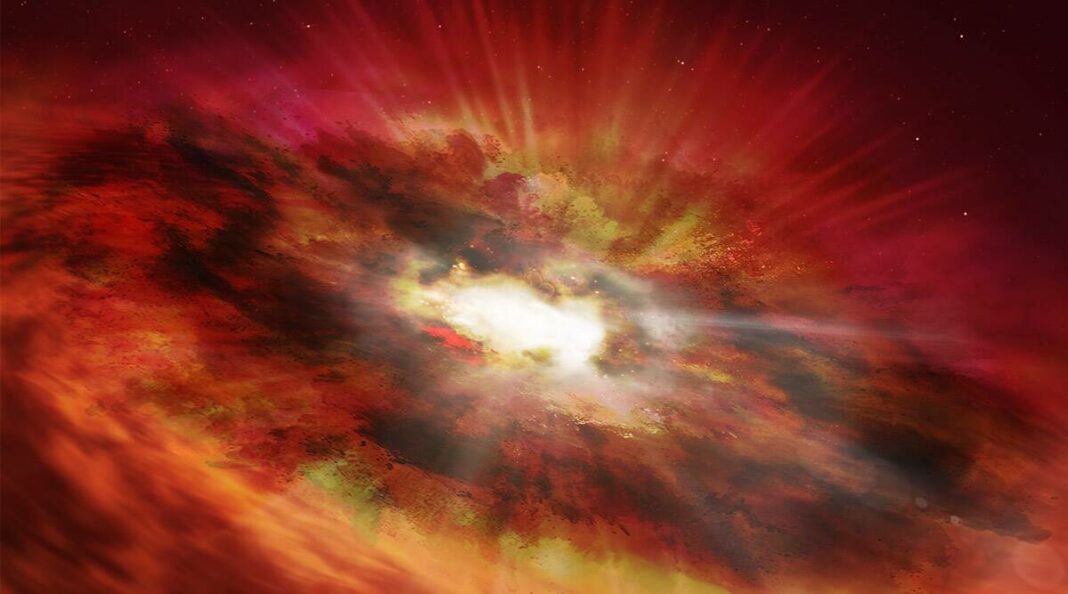Astrophysicists at the Niels Bohr Institute, University of Copenhagen and the Technical University of Denmark have identified a distant object that has properties that lie between those of a galaxy and of a quasar. The discovery is attributed to the Hubble telescope. The newly found object has been named GNz7q by the team and was born 750 million years after the Big Bang. It can be seen as the ancestor of a supermassive black hole that was born relatively soon after the Big Bang during a period called the cosmic dawn.
This object could be seen as the ancestor of a supermassive black hole that was born relatively soon after the Big Bang. Earlier simulations have indicated that such objects would exist but this is the first actual observation of such an object.
“The discovered object connects two rare populations of celestial objects, namely dusty starbursts and luminous quasars, and thereby provides a new avenue toward understanding the rapid growth of supermassive black holes in the early universe,” said Seiji Fujimoto, a postdoctoral fellow based at the Niels Bohr Institute, University of Copenhagen, in a press statement.
The host galaxy of GNz7q is an “intensely star-forming galaxy”, forming stars at a rate 1,600 times faster than our own galaxy. These stars create and heat cosmic dust, making it glow in infrared to such an extent that GNz7q’s host is more luminous in dust emission than any other known object from the period.
In recent years, it was discovered that luminous quasars are powered by supermassive black holes, with masses ranging from millions to tens of billions of solar masses, surrounded by vast amounts of gas. As gas falls into the black hole, it will heat up due to friction, providing a luminous effect.
The research team behind the discovery now hopes to search for similar objects using dedicated high-resolution surveys that take advantage of the James Webb Space Telescope. Further research into such objects will help scientists understand more about supermassive black holes.
